Wrocław’s complex history is marked by its dramatic transformation during World War II. Once known as the bustling city of Breslau, it became a focal point of Nazi military strategy, leading to its near-complete destruction. As the Soviet Army advanced, the remnants of Breslau faded into history, paving the way for Wrocław’s post-war rebirth. Yet, the scars of this tumultuous past still linger, inviting visitors to uncover the remarkable story of resilience that lies beneath the surface.
Key Points
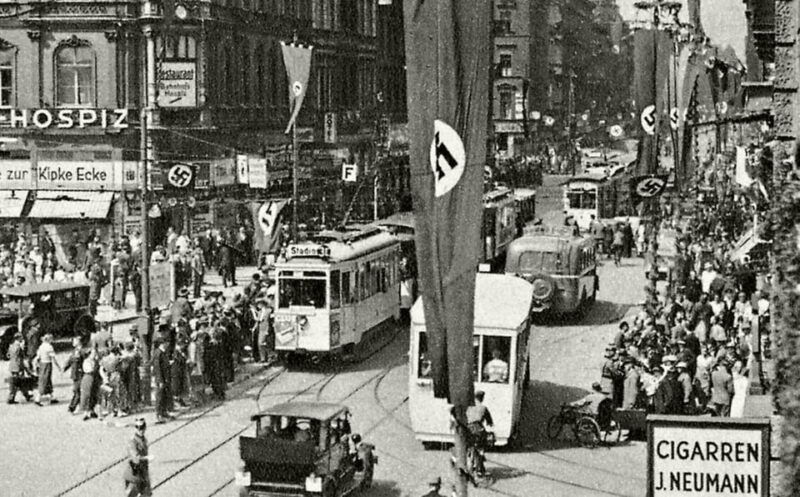
- Wrocław, formerly known as Breslau, was a strategically important city for the Nazis, hosting the largest NSDAP headquarters in Eastern Germany.
- The city’s declaration as "Festung Breslau" in 1945 led to intense urban combat and significant destruction by the advancing Soviet Army.
- Wrocław’s pre-war cultural and historical identity was largely erased due to the extensive damage inflicted during World War II.
- The battle for Wrocław resulted in the capture of Ostrów Tumski, a significant moment in the conflict, and widespread devastation of the city’s historic architecture.
- In the aftermath of the war, the resilient residents of Wrocław began the arduous task of rebuilding the city from the rubble, gradually reclaiming its status as a vibrant cultural hub.
Wrocław’s Pre-War History
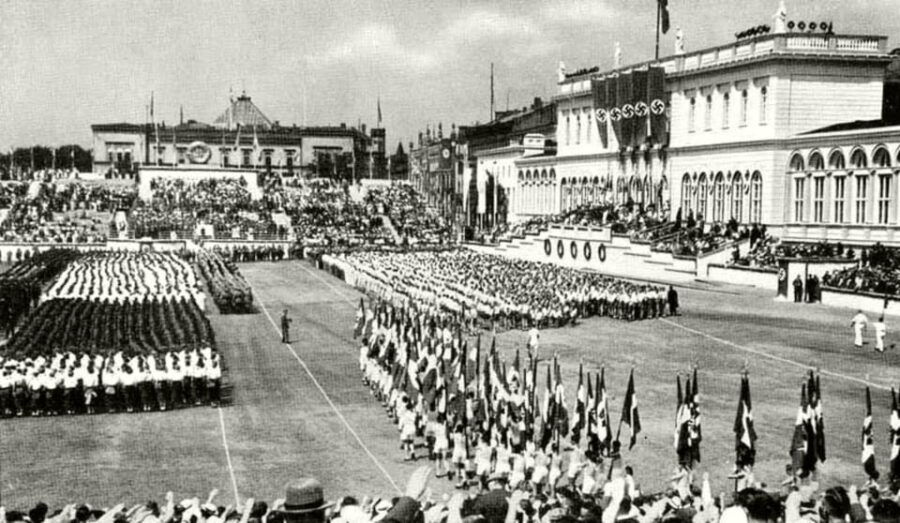
Although Wrocław, formerly known as Breslau, had long held cultural and historical significance as the capital of Silesia, its association with the NSDAP movement in the early 1930s would come to shape its fate during World War II.
The largest NSDAP headquarters in Eastern Germany was located in Wrocław, and Hitler himself visited the city several times.
By 1945, Wrocław had been declared "Festung Breslau," a fortress city to be defended at all costs.
This designation would lead to the city’s significant destruction as fierce battles raged within its streets and buildings.
Want to see more of Wroclaw? Here are other city tours we've reviewed
The Rise of Nazi Influence
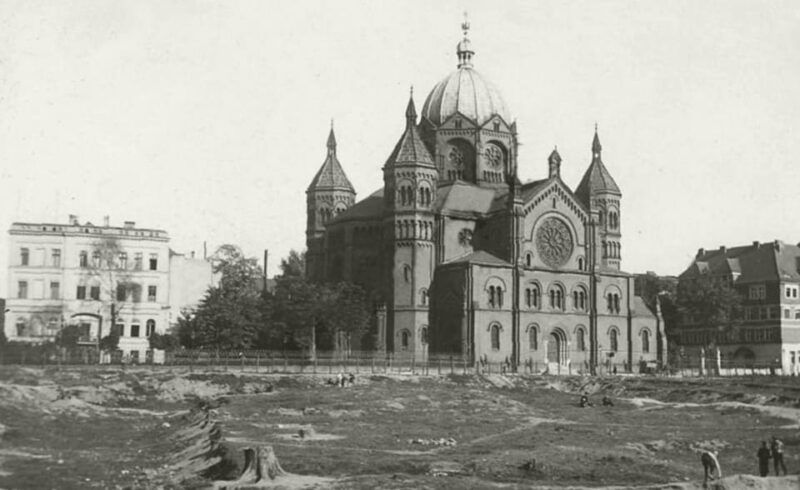
The NSDAP’s rise to power in the early 1930s cast a long shadow over Wrocław, formerly known as Breslau. The city became a stronghold for the Nazi party, with their largest headquarters in Eastern Germany located here.
Hitler visited Breslau several times, delivering speeches from the Castle Square. By 1945, the city was declared Festung Breslau, meaning "Fortress Breslau," and faced significant destruction during the Soviet Army’s advance.
This marked the beginning of Wrocław’s transformation, as the once-thriving city was reduced to rubble, its pre-war identity all but erased.
Breslau During World War II
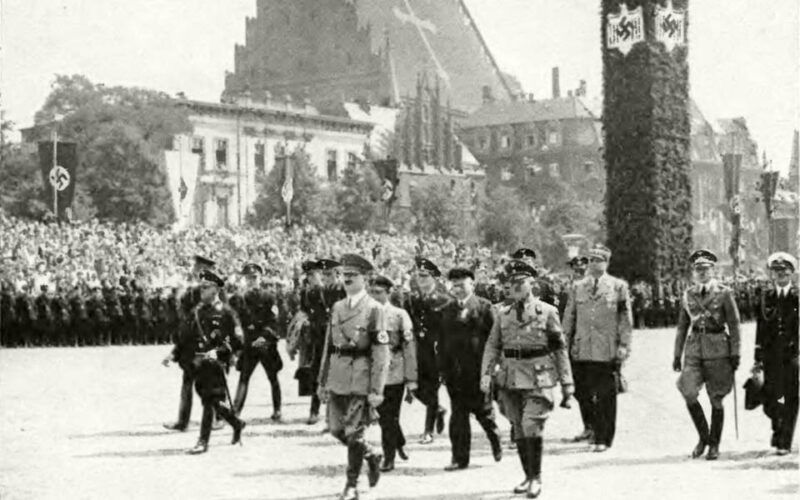
As Breslau’s identity became increasingly intertwined with the Nazi movement, the city witnessed a profound transformation during World War II.
The largest NSDAP headquarters in Eastern Germany were located in Breslau, and Hitler visited the city several times.
In 1945, Breslau was declared a Festung, or fortress, leading to significant destruction.
Fierce battles raged, with the Soviet Army finally entering the city in 1945.
The conflict left Breslau in ruins, forever altering its landscape and the lives of its inhabitants.
The conflict left Breslau in ruins, forever altering its landscape and the lives of its inhabitants.
-
Breslau became a stronghold of the Nazi party, with the largest NSDAP headquarters in Eastern Germany.
-
The city was declared a Festung in 1945, prompting fierce battles and extensive damage.
-
The Soviet Army’s entry in 1945 marked the end of Breslau, irrevocably changing the city.
The Battle for Wrocław
By early 1945, the Soviet Army had reached the outskirts of Wrocław, once known as Breslau. The city was declared a fortress by the Nazi regime, determined to fight to the bitter end.
Fierce urban combat ensued as Soviet forces pushed into the city center. Wrocław’s once-grand architecture lay in ruins, torn apart by artillery and street-by-street fighting. Hundreds of civilians were caught in the crossfire, their fate uncertain.
The Soviets finally captured Ostrów Tumski, the historic cathedral district, after weeks of brutal conflict. Wrocław, once a vibrant city, now lay in smoldering ruins, a testament to the horrors of war.
More Great Tours NearbyRebuilding From the Ruins
Though Wrocław had been reduced to rubble by the end of World War II, the resilient spirit of its people shone through as they set about rebuilding their city from the ashes.
With limited resources, the residents worked tirelessly to:
-
Clear the mountains of debris that covered the city, often using bare hands and primitive tools.
-
Restore essential infrastructure like water, electricity, and transportation to get the city functioning again.
-
Rebuild iconic landmarks like the Wrocław Cathedral, repurposing salvaged materials to retain the city’s historic character.
Slowly but surely, Wrocław rose from the ashes, reclaiming its place as a vibrant cultural hub.
Exploring Wrocław’s War-Torn Past
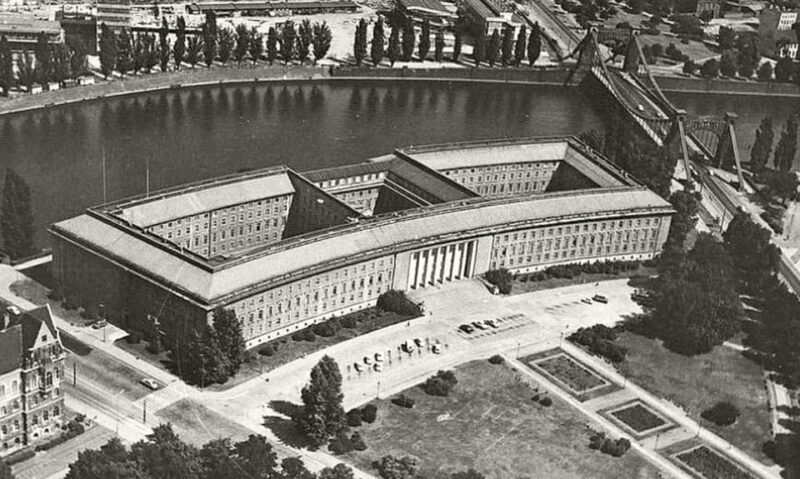
Wrocław’s war-torn past comes alive as visitors embark on a captivating journey through the city’s history. Guided by expert storytellers, they uncover the remnants of Nazi influence, from the notorious Breslau headquarters to the sites of fierce battles.
Visitors stand in awe at Partisan Hill, imagining the underground bunkers that once housed the city’s defiant resistance. They retrace the steps of the Soviet Army’s dramatic entry along Świdnicka Street, all while marveling at the restored Cathedral of Ostrów Tumski, a symbol of Wrocław’s resilience.
This immersive experience illuminates the city’s profound transformation, from the shadows of war to its vibrant present.
The City’s Transformation and Resilience
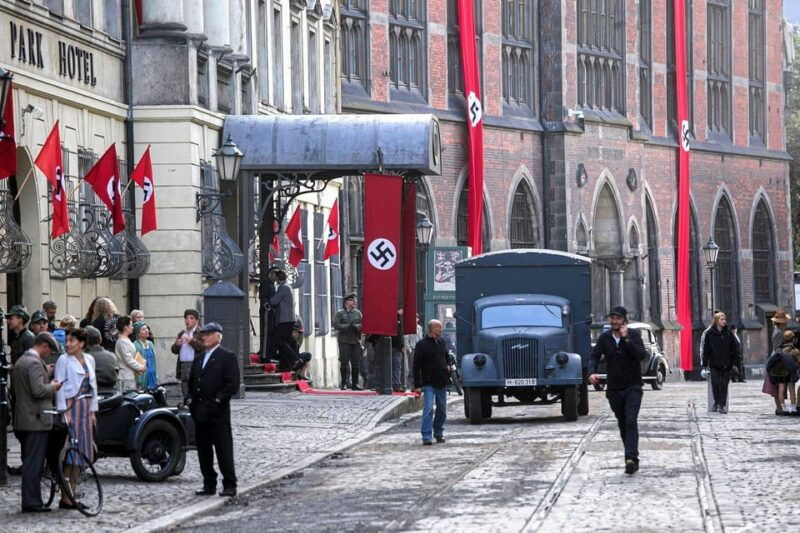
As the tour winds through Wrocław’s historic streets, visitors can’t help but marvel at the city’s remarkable transformation. Once the capital of Silesia known as Breslau, the city stood in ruins after World War II.
Yet, through sheer determination and resilience, Wrocław has risen from the ashes:
-
Iconic landmarks like the Old Town Hall and the Ostrów Tumski Cathedral have been meticulously restored, their grandeur reclaimed.
-
Bustling markets and cobblestone squares now teem with life, a far cry from the desolation of the past.
-
The city’s vibrant culture and diverse population have breathed new energy into Wrocław, making it a thriving hub of innovation and creativity.
Frequently Asked Questions
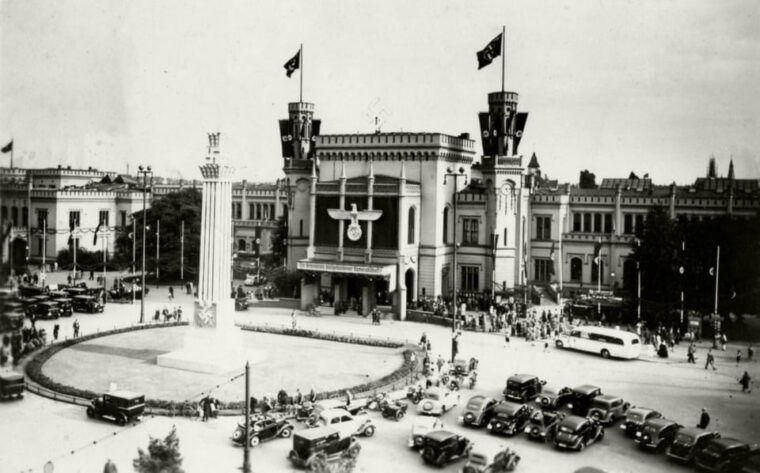
Is the Tour Suitable for Children Under 10 Years Old?
The tour may not be the best fit for children under 10 years old. The content focuses on Wrocław’s grim wartime history, which could be heavy subject matter for younger participants. However, the tour is wheelchair-accessible, making it accessible for families.
Can the Tour Be Conducted in Languages Other Than Polish and German?
Unfortunately, the tour is only offered in Polish and German. While the guide may be able to provide some assistance in other languages, a fully translated tour experience is not available. The tour itinerary and content are specifically tailored to the two provided languages.
Are There Any Restrictions on Photography During the Tour?
The tour doesn’t mention any restrictions on photography, so participants can freely take photos throughout the experience. However, it’s always polite to be mindful of others and avoid disrupting the guide’s commentary.
Is the Tour Available on Weekends and Public Holidays?
The tour’s availability isn’t limited to weekdays – it’s offered on weekends and public holidays too. You can check the schedule when booking to find a time that works best for your plans.
Are Food and Drinks Included in the Tour Price?
The tour price does not include any food or drinks. Participants can explore Wroclaw’s cafes and restaurants on their own after the guided portion of the tour concludes at Ostrów Tumski.
The Sum Up
Wrocław’s tumultuous journey through World War II left it in ruins, but the city’s resilient spirit refused to be extinguished. From the ashes of Breslau emerged a new Wrocław, a testament to the unwavering determination of its people to reclaim their heritage and forge a brighter future. Today, the city stands as a symbol of rebirth, a phoenix rising from the devastation of war.
You can check availability for your dates here:More 2-Hour Experiences in Wroclaw
More City Tours in Wroclaw
- Wroclaw: Private UNLIMITED beer incl. City Tour By Golf Cart
- Wrocaw: Short City Guided-Walk and Boat-Cruise (2 h)
- Wrocaw: Long City Guided-Walk and River Cruise (3 h)
- Wroclaw: No Limit Beer City Tour Sightseeing By Golf Cart
- Wroclaw: 3-Hour City WalkingTour with University & Cathedral
- Walking group tour in Ukrainian through the Wroclaw old city
More Tour Reviews in Wroclaw
Still browsing? Here are more Wroclaw experiences we've covered recently
- 14 Must-Try Tours & Experiences In Wroclaw
- The 14 Top Tours In Wroclaw: Which Is Best?
- Our Picks For The 5 Best Walking Tours In Wroclaw
- Wroclaw’s 3 Top Historical Tours (With Prices)
- We Rank Wroclaw’s 4 Top Drinking Tours
- 7 Top Cruises And Boat Tours In Wroclaw (With Reviews & Prices)
- What Are The Best 2-Hour Tours In Wroclaw? Our Top 3 Picks
- Discover 7 Great City Tours In Wroclaw
- Wrocaw: 2-hour e-bus tour with driver-guide up to 16 people
- Wrocaw: Historical Tour with Tablets and Guide
- Wroclaw: Private UNLIMITED beer incl. City Tour By Golf Cart
- Wroclaw: Spy-Themed Walk & Game with Host
